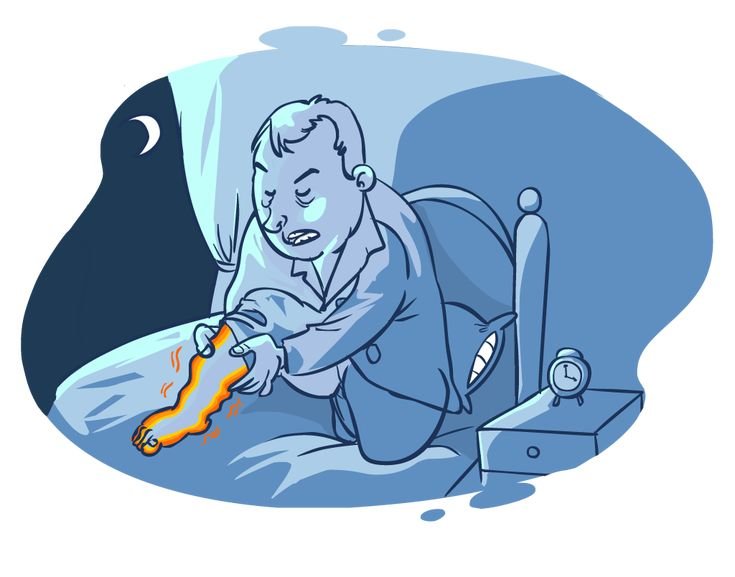Introduction
Living with Restless Legs Syndrome (RLS) can significantly impact your quality of sleep and overall well-being. The constant urge to move your legs, especially during the night, can make it challenging to get the restful sleep your body needs. In this article, we will explore eight tips to help you manage RLS symptoms and improve your sleep quality. From understanding the condition and adopting healthy sleep habits to incorporating relaxation techniques and seeking professional support, these strategies aim to enhance your sleep experience and alleviate the discomfort associated with RLS.
Gabapentin 100mg is a medication primarily used to treat nerve pain and seizures. It works by affecting certain neurotransmitters in the brain, helping to reduce pain signals and stabilize electrical activity. It’s often prescribed for conditions like neuropathic pain and post herpetic neuralgia, and sometimes as an adjunct treatment for seizures.
Understanding Restless Legs Syndrome (RLS)
What is RLS and its Symptoms
Ah, the infamous restless legs syndrome, or as I like to call it, the “can’t keep still in bed” condition. RLS is a neurological disorder that gives you the irresistible urge to move your legs to relieve uncomfortable sensations. Symptoms include tingling, itching, burning, or crawling sensations in the legs, usually worsened at night. It’s like a midnight dance party no one asked for.
Causes and Triggers of RLS
What’s causing all this leg drama, you ask? Well, the exact cause of RLS is still a bit of a mystery, but it’s believed to be linked to genetics, iron deficiency, or certain health conditions. Triggers can include caffeine, stress, lack of exercise, or simply the universe deciding to mess with your sleep. Thanks, universe.
Diagnosis and Treatment Options
So, you suspect you have RLS? Time to play detective and visit your friendly neighborhood doctor. Diagnosis typically involves describing your symptoms (the leg disco party) and maybe some blood tests. Treatments can range from lifestyle changes (we’ll get to those) to medications that help calm those restless legs. It’s all about finding what works best for you and your legs’ social calendar.
Establishing a Consistent Sleep Routine
Benefits of a Regular Sleep Schedule
Picture this: your body as a toddler who thrives on routine. A consistent sleep schedule not only helps regulate your circadian rhythm but also tells your brain, “Hey, it’s bedtime, time to wind down those legs and catch some ZZZs.” Plus, it’s like giving your body a bedtime hug every night.
Gabapentin 300 mg is a medication that contains gabapentin, used to manage restless legs syndrome and seizures. It works by altering the way nerves send messages to the brain, helping to reduce pain and stabilize neural activity. Gabapentin is often prescribed for conditions like neuropathic pain and epilepsy.
Tips for Setting a Bedtime Routine
Ready to make bedtime your new BFF? Start by creating a soothing pre-sleep ritual – think calming activities like reading, taking a warm bath, or listening to calming music. Set a specific bedtime and wake-up time, and stick to it like your favorite guilty pleasure TV show. Your legs will thank you for the consistency.
Creating a Relaxing Sleep Environment
Optimizing Your Bedroom for Sleep
You know that feeling when you walk into a fancy hotel room and instantly feel relaxed? Time to bring that vibe to your bedroom. Keep your sleep space cool, dark, and quiet – basically, a bat cave minus the bats. Invest in a comfy mattress and pillows, and banish any work-related clutter to tell your brain, “This is a sleep sanctuary, not an office extension.”
Relaxation Techniques Before Bed
Feeling wound up like a spring before bed? Time to unwind with some relaxation techniques. Try deep breathing, progressive muscle relaxation, or gentle yoga stretches to calm both your mind and those restless legs. Remember, it’s all about signaling to your body that it’s time to shift gears from daytime hustle to nighttime chill.
Incorporating Physical Activity into Your Day
Exercise and its Impact on RLS Symptoms
Who knew breaking a sweat could be a secret weapon against RLS? Regular physical activity not only promotes overall health but can also help reduce RLS symptoms by improving circulation and promoting better sleep. It’s like telling your legs, “Hey, you’ve had your dance party, now it’s time to chill out and rest.”
Recommended Physical Activities for Better Sleep
Not all heroes wear capes – some just lace up their sneakers and go for a walk. Opt for low-impact exercises like walking, cycling, or swimming to get those legs moving without overtaxing them. Aim for at least 30 minutes of moderate exercise most days of the week to keep those restless legs in check and your sleep on point.
Mindfulness and Relaxation Techniques
Are your restless legs hosting a late-night party when all you want is some shut-eye? Mindfulness and relaxation techniques might just be the bouncers you need to calm the party down.
Breathing Exercises and Meditation
Take a breather, literally! Deep breathing exercises and meditation can help soothe your restless legs and lull them into a peaceful slumber. Inhale the good vibes, exhale the leg jitters.
Progressive Muscle Relaxation Techniques
Progressive muscle relaxation is like a bedtime story for your muscles. By tensing and then relaxing each muscle group, you can wave goodbye to the restlessness and invite relaxation to tuck you in.
Managing Medications and Supplements
When restless legs turn your bed into a dance floor, managing medications and supplements can act as the DJ, changing the tune to a sleepy lullaby.
Common Medications for RLS
From dopamine agonists to anticonvulsants, there’s a pharmacy of options to help manage restless legs. Just make sure to consult with your healthcare provider for the perfect prescription.
Supplements and Natural Remedies
If you prefer a more natural approach, supplements like iron, magnesium, and herbs like valerian root can join forces to serenade your restless legs into submission.
Dietary Changes for Improved Sleep
Who knew that what’s on your plate could influence the restless leg tango at night? Let’s explore how to eat your way to a restful slumber.
The Connection Between Diet and RLS Symptoms
Your diet might be stirring up a storm in those restless legs. Foods high in sugar, caffeine, and alcohol could be fueling the dance party. Time to switch up the menu!
Recommended Foods and Nutrients for Better Sleep
Swap out the sugar for some sleep-inducing snacks! Incorporating foods rich in iron, folate, and magnesium can help calm those jumpy legs and pave the way for a snooze-worthy night.
Seeking Professional Help and Support
When restless legs crash the sleepover one too many times, it’s time to call in the professionals for backup. Don’t suffer in silence – help is just a consultation away!
Consulting with a Healthcare Provider
Your healthcare provider is the sleep superhero you need to defeat restless legs. They can recommend treatments, adjust medications, and offer expert guidance tailored to your needs.
Support Groups and Resources for RLS Management
Who says managing restless legs has to be a solo gig? Joining support groups and tapping into resources can provide a sense of community, camaraderie, and shared tips for conquering restless legs syndrome.
Conclusion
By implementing the tips outlined in this article, individuals with Restless Legs Syndrome can take proactive steps to promote better sleep and enhance their overall quality of life. From establishing a consistent sleep routine and creating a peaceful sleep environment to exploring mindfulness techniques and seeking professional guidance, managing RLS symptoms can become more manageable. Remember that finding the right combination of strategies tailored to your unique needs is key to achieving restful and rejuvenating sleep despite the challenges posed by RLS.
FAQ
Q: Can RLS symptoms worsen with poor sleep habits?
A: Yes, inadequate sleep and irregular sleep patterns can exacerbate RLS symptoms. Establishing a consistent sleep routine and creating a calming sleep environment may help alleviate these symptoms.
Q: Are there specific foods or drinks that can trigger RLS symptoms?
A: Some individuals find that consuming caffeine, alcohol, or certain foods high in sugar or processed ingredients can exacerbate RLS symptoms. Experimenting with dietary modifications and keeping a food diary may help identify triggers.
Q: Is medication the only option for managing RLS symptoms?
A: While medications can be prescribed to manage severe RLS symptoms, incorporating lifestyle changes such as regular exercise, relaxation techniques, and dietary adjustments can also play a significant role in symptom management.
Q: How can I find support for dealing with RLS?
A: Seeking support from healthcare providers, joining online or in-person support groups, and connecting with others who have RLS can provide valuable resources and a sense of community for individuals managing this condition.




